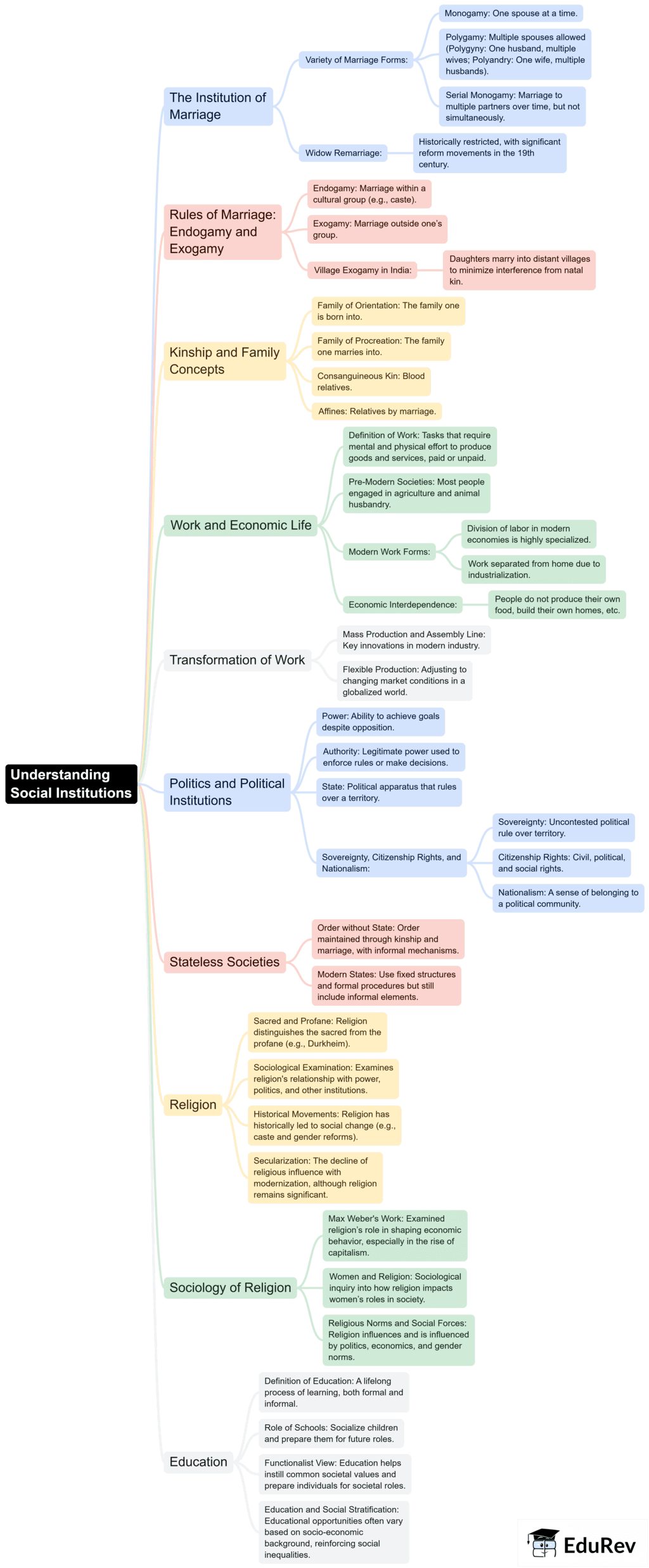Humanities/Arts Exam > Humanities/Arts Notes > Sociology Class 11 > Mind Map: Understanding Social Institutions - 2
Mind Map: Understanding Social Institutions - 2 | Sociology Class 11 - Humanities/Arts PDF Download

The document Mind Map: Understanding Social Institutions - 2 | Sociology Class 11 - Humanities/Arts is a part of the Humanities/Arts Course Sociology Class 11.
All you need of Humanities/Arts at this link: Humanities/Arts
|
41 videos|116 docs|17 tests
|
FAQs on Mind Map: Understanding Social Institutions - 2 - Sociology Class 11 - Humanities/Arts
| 1. What are social institutions and why are they important? |  |
Ans. Social institutions are complex, enduring sets of social norms and structures that organize human behavior in various areas of life, such as family, education, religion, and the economy. They are important because they provide stability, support, and continuity in society, helping individuals understand their roles and responsibilities.
| 2. How do social institutions influence individual behavior? |  |
Ans. Social institutions influence individual behavior by establishing norms, values, and expectations that guide how people act within different contexts. For example, the family institution shapes values around relationships, while educational institutions influence knowledge and career aspirations. These frameworks help individuals navigate social interactions.
| 3. What are the main types of social institutions? |  |
Ans. The main types of social institutions include the family, education, religion, economy, and government. Each of these institutions plays a critical role in shaping societal norms, values, and interactions, contributing to the overall functioning of society.
| 4. How do social institutions change over time? |  |
Ans. Social institutions change over time due to various factors such as cultural shifts, technological advancements, and social movements. Changes in societal values or demographic trends can lead to transformations in how these institutions operate, reflecting the evolving needs and beliefs of the population.
| 5. What role do social institutions play in promoting social cohesion? |  |
Ans. Social institutions promote social cohesion by creating shared norms and values, fostering a sense of belonging, and facilitating cooperation among individuals. By providing frameworks for interactions and collective activities, they help build trust and solidarity within communities, contributing to social stability.
Related Searches
















